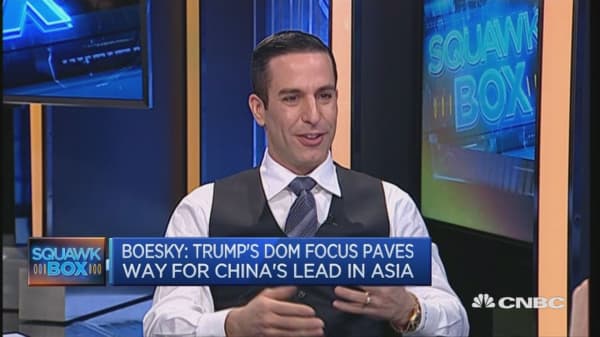Working over the Thanksgiving weekend to keep 1,400 jobs from leaving Indiana for lower-cost production sites in Mexico, President-elect Donald Trump has begun his difficult mission to revive the sluggish economy and to stem America's soaring foreign debt.
The jobs at Carrier Corp. are on the way to Mexico because the company concluded that it could not stay competitive and reward its shareholders unless it took advantage of lower production costs south of the border. Things are as simple as that, and the man who made billions of dollars in his businesses needs no coaching in cost accounting.
But this particular case raises much broader economic policy issues the incoming administration will have to address with the same sense of urgency showed by America's new chief executive.
So, let's see how this nickels-and-dimes story leads to core problems of American economic growth.
Here are the key variables to consider. Profits – revenues minus costs – are the central issue in Carrier's case. Revenues are a product of prices times the quantity of goods (or services) sold. Costs consist of labor compensation, non-wage costs, materials used in the production process and various other items.
Productivity is a cost killer
Mexico beacons because of its lower labor costs – an outlay that generally represents three-quarters of all production costs, and possibly much more in highly labor-intensive industries.
The counter-intuitive idea is that Indiana could still beat Mexico. How? Easy, because hourly wage and non-wage labor costs can be offset by higher labor productivity – a simple concept (but a black box for economic theorists) that measures how many units of a given product (or service) a worker produces per hour. That difference(labor costs minus productivity) is called a labor cost per unit of output and serves as a dominant variable in the profit equation of revenues minus costs.
To illustrate the point, here is what a great star of the business world had to say about that.
Some years ago, when China and a few other places in East Asia were the promised land of cheap manufacturing, a famous "cost and keiretsu killer" is reported to have said that it was still more profitable for him to produce cars in Japan. That was possible, the story went, because it took much less time for a highly trained Japanese labor force, working with sophisticated technology, to turn out a product of superior quality. In other words, higher productivity gains were (a) offsetting the enormous wage differential, (b)protecting the pricing power and (c) generating a profit.






